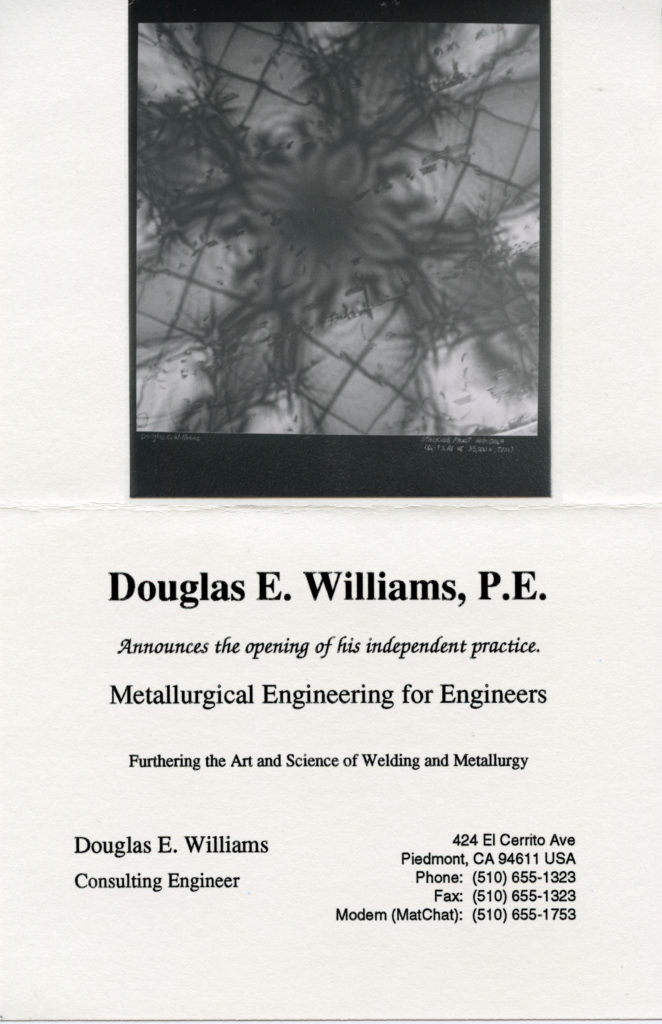
When I started my new consulting practice in 1992, I mailed the announcement that is reproduced here. The card was printed on my laser printer, but the image was a black & white photo that I printed in my darkroom and glued on. This image, called “Stacking Fault Mandala,” was from a 1978 transmission electron microscope (TEM) session for a Materials Science and Engineering graduate class in basic TEM use at the University of California, Berkeley. It is a view of stacking faults in an aluminum bronze (copper with 7% aluminum; UNS C61000) at a magnification of 35,000x. The stacking faults in the face centered cubic (FCC) metal crystal lattice are the small, short, dark parallel lines that are scattered over the image where the normal arrangement of planes in the crystal are reordered. Virtually nothing in the image is physically real in the same way that moiré patterns are not real; they are the result of interference of energy beams (visible light in moiré patterns, and an electron beam in the TEM).
Aesthetically, I found the cross and various embellishments to be very beautiful and exposed the 4″x5″ negative film, even though the image could not be used for the class. This was probably a 0,0,1 orientation of the crystal; i.e., looking nearly straight down an FCC unit cell leg.
A mandala is a “geometric configuration of symbols” that “…generally represents a spiritual journey” (Wikipedia). To me, the image illustrates the order and messiness of life. The cross is a nearly universal symbol that occurs in many world religions such as Christianity, but, here, it demonstrates a fascinating symmetry of embellishments. The dark cross diagonally overlays the lighter and plainer intersection, while being orientated to a gridlike structure.
The mandala that I am most familiar with is also laid out in a cross in what is called by some as the “Five Buddha” type of mandala. The five are Dhyani, or Tathagata, buddhas that are arranged in a cross with the four points of the compass plus the center; i.e., Aksobhya, Ratnasambhava, Amitabha, Amoghasiddhi, and Vairocana, in the East, South, West, North and center, respectively. Many versions of this mandala include the quarter compass directions, similar to the layout in the “Stacking Fault Mandala.” Lama Anagarika Govinda presents how the mandala describes a progression, or journey, in his book, “Creative Meditation and Multi-Dimensional Consciousness” (First Quest Book, 1976). I have spent decades studying his very deep and authoritative books, but this one is a great starting place.
